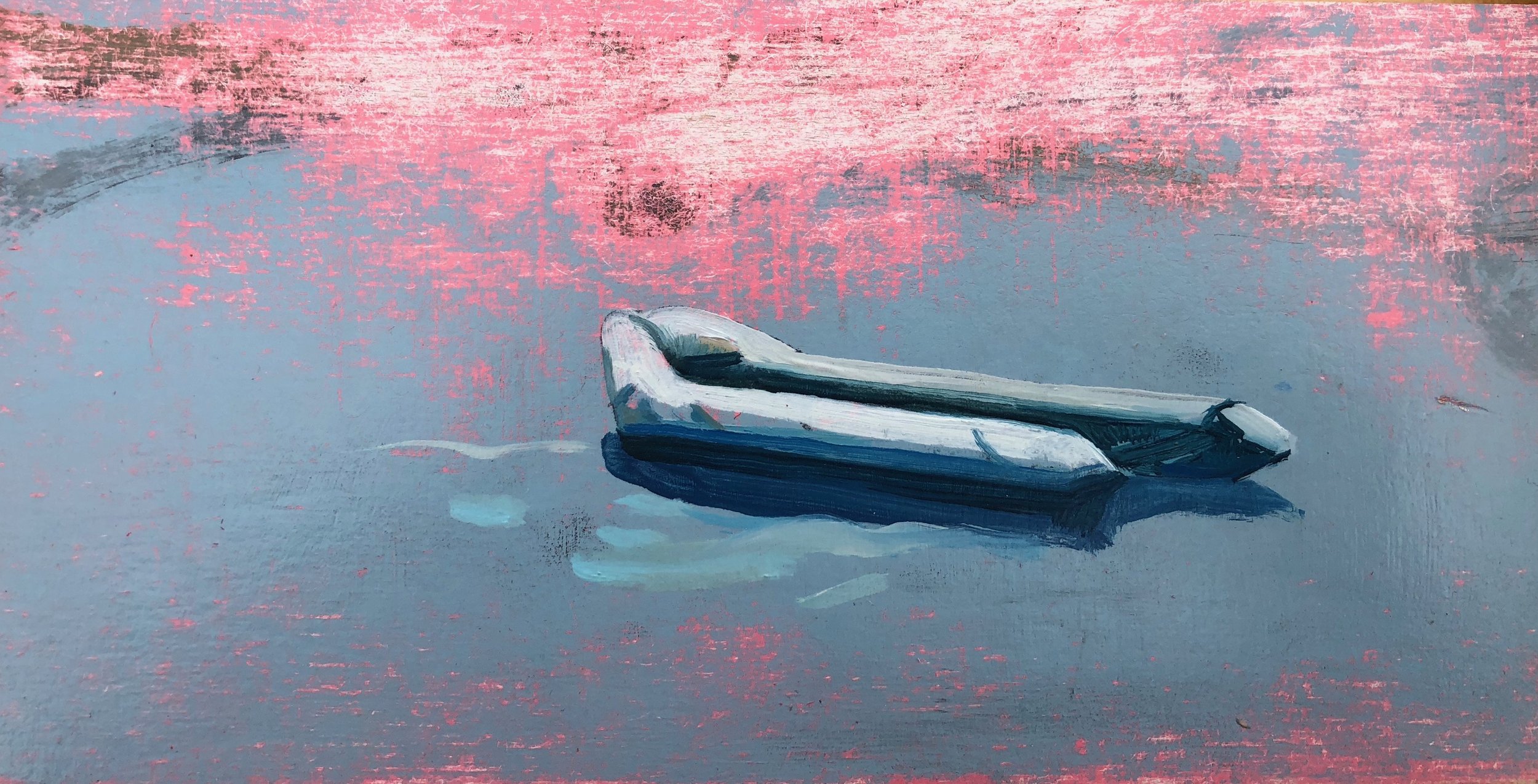The Beginning (Again)
Cicadas, 2021, Acrylic and Ink on Paper, 28” x 32”
Gemini (Twins), 2021, Acrylic and Ink on Paper, 30” x 28”
Cabin, 2015, oil and spray paint on panel, 12” x 13”
House In The Woods, 2015, oil and spray paint on panel, 13” x 15”
“We are all actors in this drama… It may well be that because no one stands outside the scene, no one has the distance to make art from it. But we’ve got to try. Art, like religion, is one of the ways we digest what is happening to us, make sense out of it that proceeds to action. Otherwise, the only role left to us — noble, but also enraging in its impotence — is simply to pay witness.”
Orchard, oil and spray paint on canvas, 48” x 60”
What landscape is: not a closed space, not in fact capable of closure. With each survey the corners shift. Distance is the goal; groping, the means.
-C.D. Wright
Red Door, 2015, oil on canvas, 48” x 48”
Half Built House, 2014, oil and spray paint on panel, 12” x 13”
White Cabin, 2015, oil and spray paint on paper, 20” x 18”
Compound, 2015, oil and spray paint on panel, 28” x 32”
Coyote, 2016, oil and spray paint on canvas, 48” x 54”
Red Chair, 2016, oil and spray paint on paper, 28" x 30”
Noon, 2017, oil on canvas, 36” x 34”
Park, 2017, oil on canvas, 32” x 30”
Outpost, 2013, oil and spray paint on panel, 12” x 13”
Abandoned Hospital, 2016, oil and spray paint on paper, 40” x 60”
Sacred sites are all around us, and when we walk those sites, we also “follow in the footsteps” of those who have come before us. History is a looping narrative and I loosely reference both historical and geographical periods and places in my work.
The paintings in The Beginning (Again) tell a story and have an underlying and ongoing narrative. I treat each painting as part of a larger story. The bridges, bunkers and cabins appear abandoned and the narrative that unfolds is partially left up to the viewer to decipher. There are no human figures in this work (only traces of what they left behind). Animals wander onto the scenes entering into an unknown, yet hopeful future. I am grappling with environmental fears and concerns and I am aware that humans, animals and the environment all share the same vulnerability.
Vault, 2015, oil and spray paint on panel, 13" x 14"
The Beginning (Again), installed, 2016, Law Warshaw Gallery, St. Paul, MN
Church, 2015, oil and spray paint on panel, 16” x 13”
Orchard (Detail), oil and spray paint on canvas, 48” x 60”
The Beginning (Again), installed, 2016, Law Warshaw Gallery, St. Paul, MN
Bridge, 2015, oil on panel, 13" x 14"
There is a connection between the wet ground of these paintings and the mutability of the environment. The paint is meant to invoke a shifting, melting ground and alludes to the unreliability of solid ground in an age of melting ice caps and flooding.
Pink Bridge, 2015, oil and spray paint on panel, 18" x 16"
Ravine, 2015, oil and spray paint on panel, 12" x 13”
Ocean, 2015, oil on canvas, 48” x 35”
Trestle Bridge, 2015, oil on panel, 13" x 14"
Dome, 2014, oil and spray paint on panel, 18” x 20”
Green Door, 2015, oil and spray paint on panel, 9" x 10"
I stress the importance of the quieter parts of the paintings-- the distant spaces, faint traces of things that remain on the ground, or trees which frame the emptiness. I am looking for humanizing traces in those spaces. I take time to create atmospheres with the paint that allude to deeper emotional realities, and my choice of palette offers a physicality, or temperature, that is visceral.
Hole, 2015, oil and spray paint on panel, 20" x 18”
Shelter, 2016, oil and spray paint on paper, 40” x 60”

